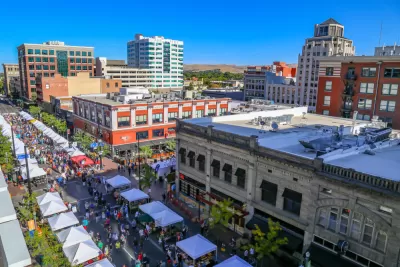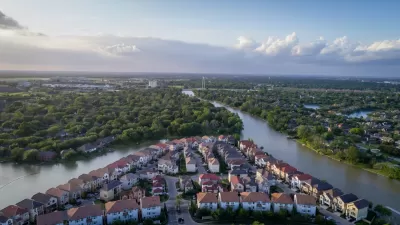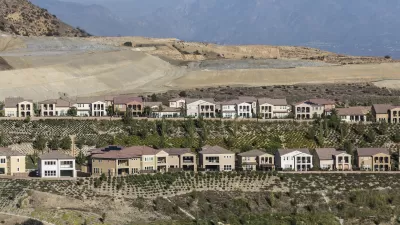Existing hubs of ‘hyperlocal’ economic activity provide a model for urban density.

While the term “15-minute city” has been co-opted by conspiracy theorists to push baseless claims, a new concept may be taking its place. As Gaby Galvin writes in Smart Cities Dive, “as city leaders look to promote more sustainable growth, they’re relying on ‘activity centers’ — hyperlocal hubs of business, retail, tourism, civic institutions and social pursuits — to help people access everything they need with less or no driving.”
Although “Conventional wisdom suggests that greater population density translates to more walking, biking and public transit use, thus lowering carbon emissions from cars,” Galvin explains that “the relationship isn’t actually so straightforward, with local policies playing a major role, researchers say.” Now, policymakers in cities including Boise and San Antonio are looking to existing activity centers as a model for sustainable future development and identifying policies that will support dense, transit-oriented development.
According to Robert Puentes, president and CEO of the Eno Center for Transportation, “It’s less about just concentrating [homes and jobs] so that people can use transit to get to those parts of the region, [and more about] trying to concentrate more of the work and play around these activity centers.”
Adie Tomer, a senior fellow at Brookings Metro, cautions that activity centers, far from a panacea, can easily encourage more driving if built around sprawling shopping centers, for example. “Ultimately, identifying where activity centers are in a metro area is just one tool for city planners, developers and local officials as they map out the future of their regions.” Tomer adds, “The activity center framework ‘should help inform a sweeping set of decisions: Where do we want to prioritize development? How do we better understand which neighborhoods interact more with one another, so we can do certain investments in these places?’”
FULL STORY: Cities see hyperlocal ‘activity centers’ key to sustainable growth, less car dependency

Trump Administration Could Effectively End Housing Voucher Program
Federal officials are eyeing major cuts to the Section 8 program that helps millions of low-income households pay rent.

Planetizen Federal Action Tracker
A weekly monitor of how Trump’s orders and actions are impacting planners and planning in America.

The 120 Year Old Tiny Home Villages That Sheltered San Francisco’s Earthquake Refugees
More than a century ago, San Francisco mobilized to house thousands of residents displaced by the 1906 earthquake. Could their strategy offer a model for the present?

HSR Reaches Key Settlement in Northern California City
The state’s high-speed rail authority reached an agreement with Millbrae, a key city on the train’s proposed route to San Francisco.

Washington State Legislature Passes Parking Reform Bill
A bill that would limit parking requirements for new developments is headed to the governor’s desk.

Missouri Law Would Ban Protections for Housing Voucher Users
A state law seeks to overturn source-of-income discrimination bans passed by several Missouri cities.
Urban Design for Planners 1: Software Tools
This six-course series explores essential urban design concepts using open source software and equips planners with the tools they need to participate fully in the urban design process.
Planning for Universal Design
Learn the tools for implementing Universal Design in planning regulations.
Ada County Highway District
Clanton & Associates, Inc.
Jessamine County Fiscal Court
Institute for Housing and Urban Development Studies (IHS)
City of Grandview
Harvard GSD Executive Education
Toledo-Lucas County Plan Commissions
Salt Lake City
NYU Wagner Graduate School of Public Service





























